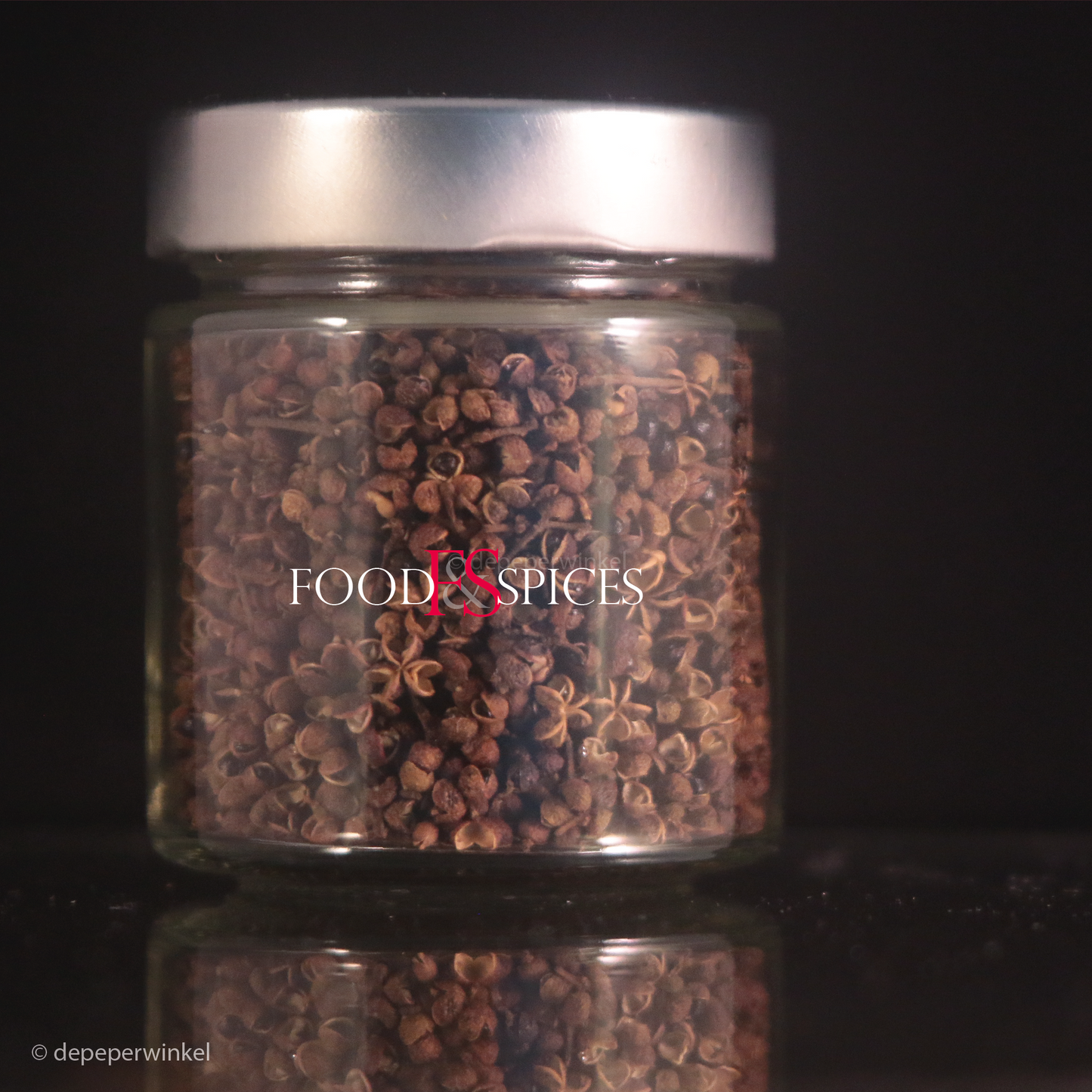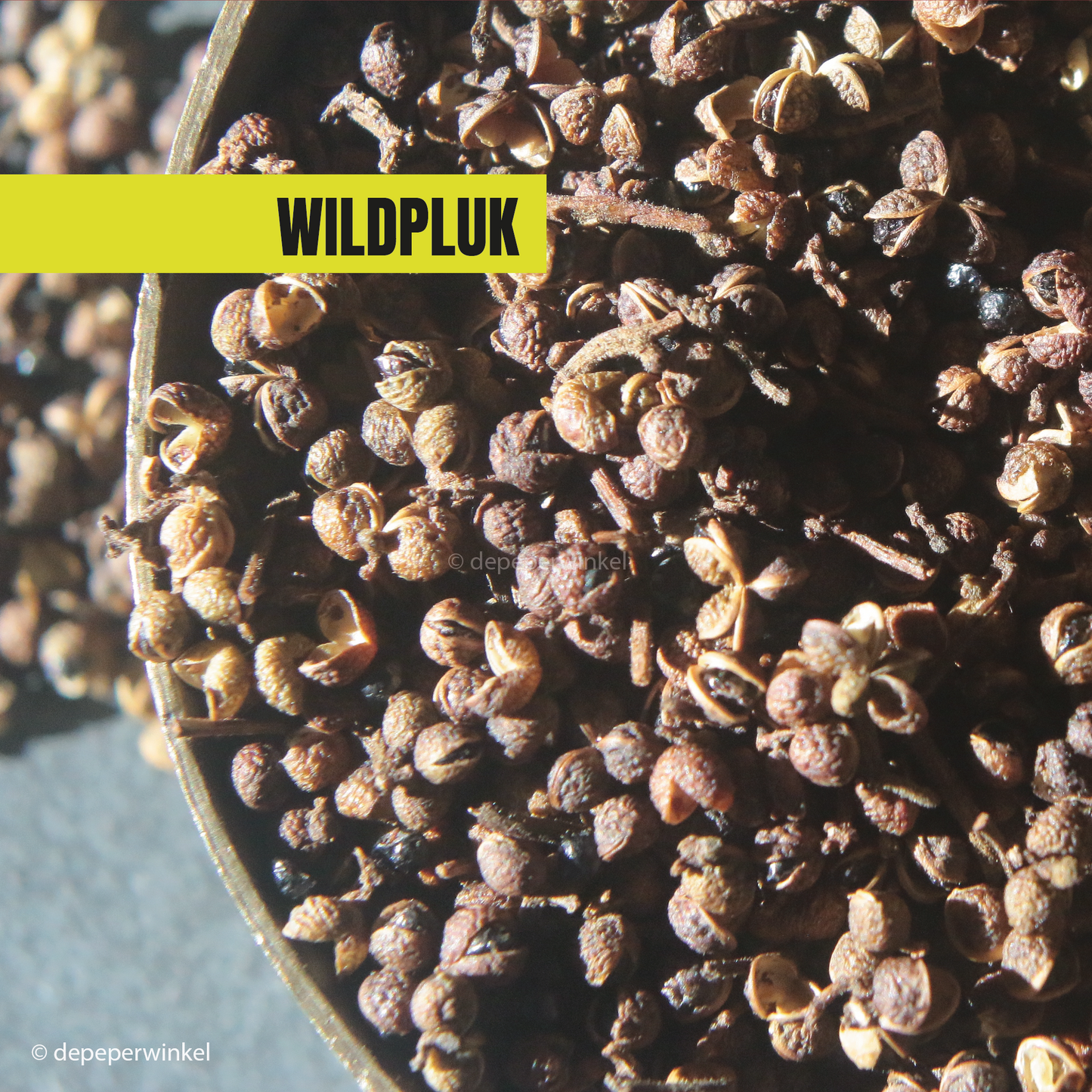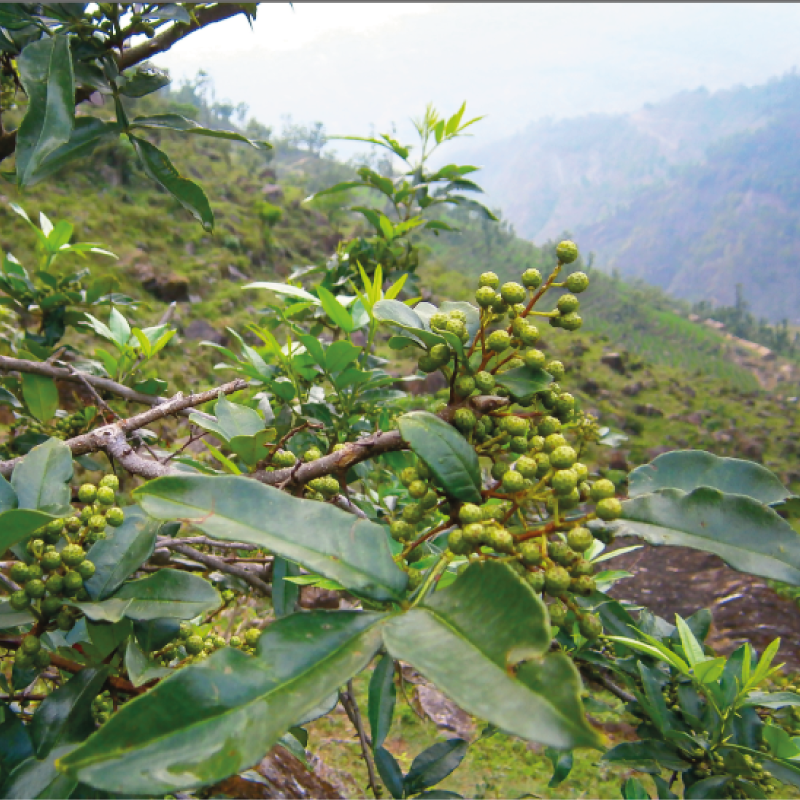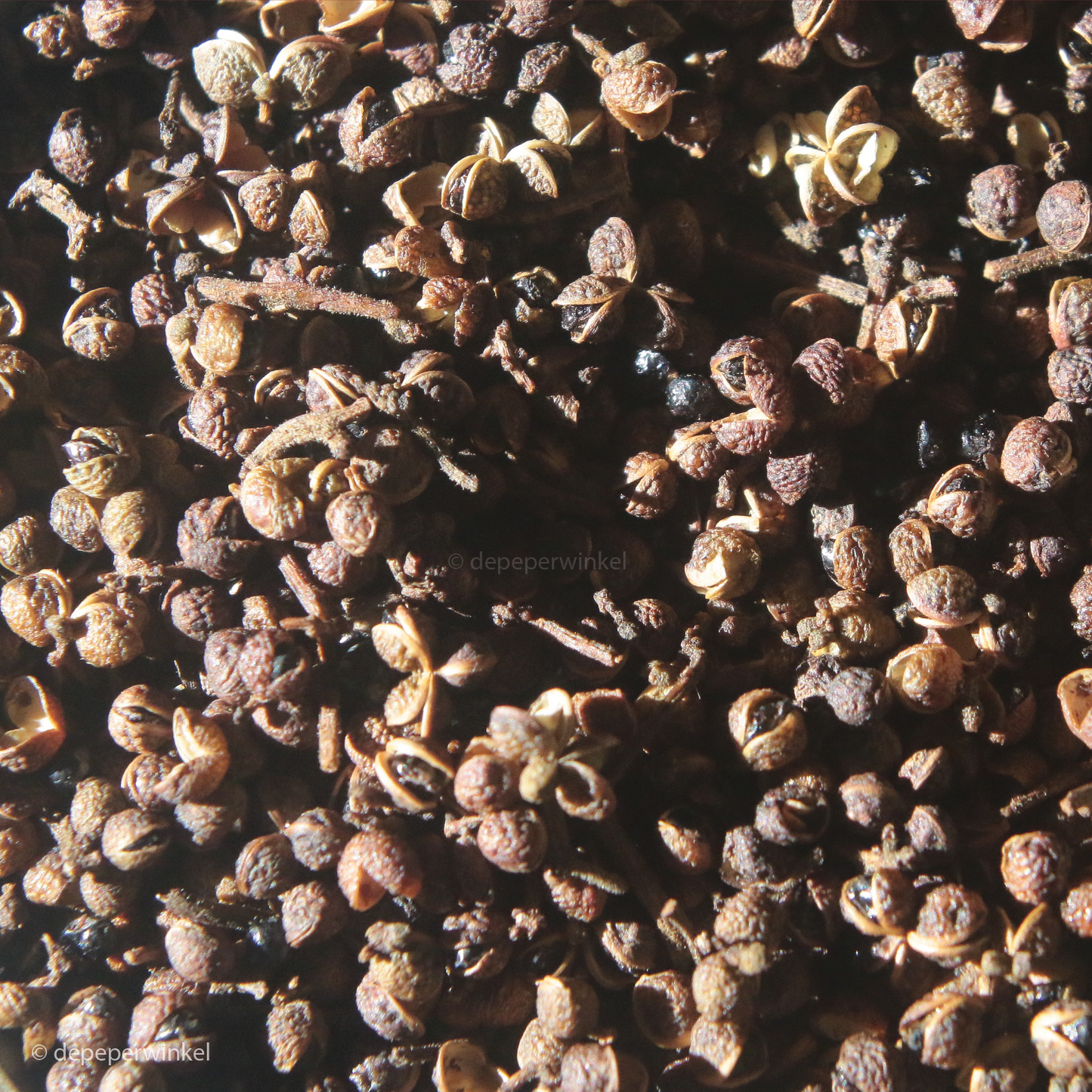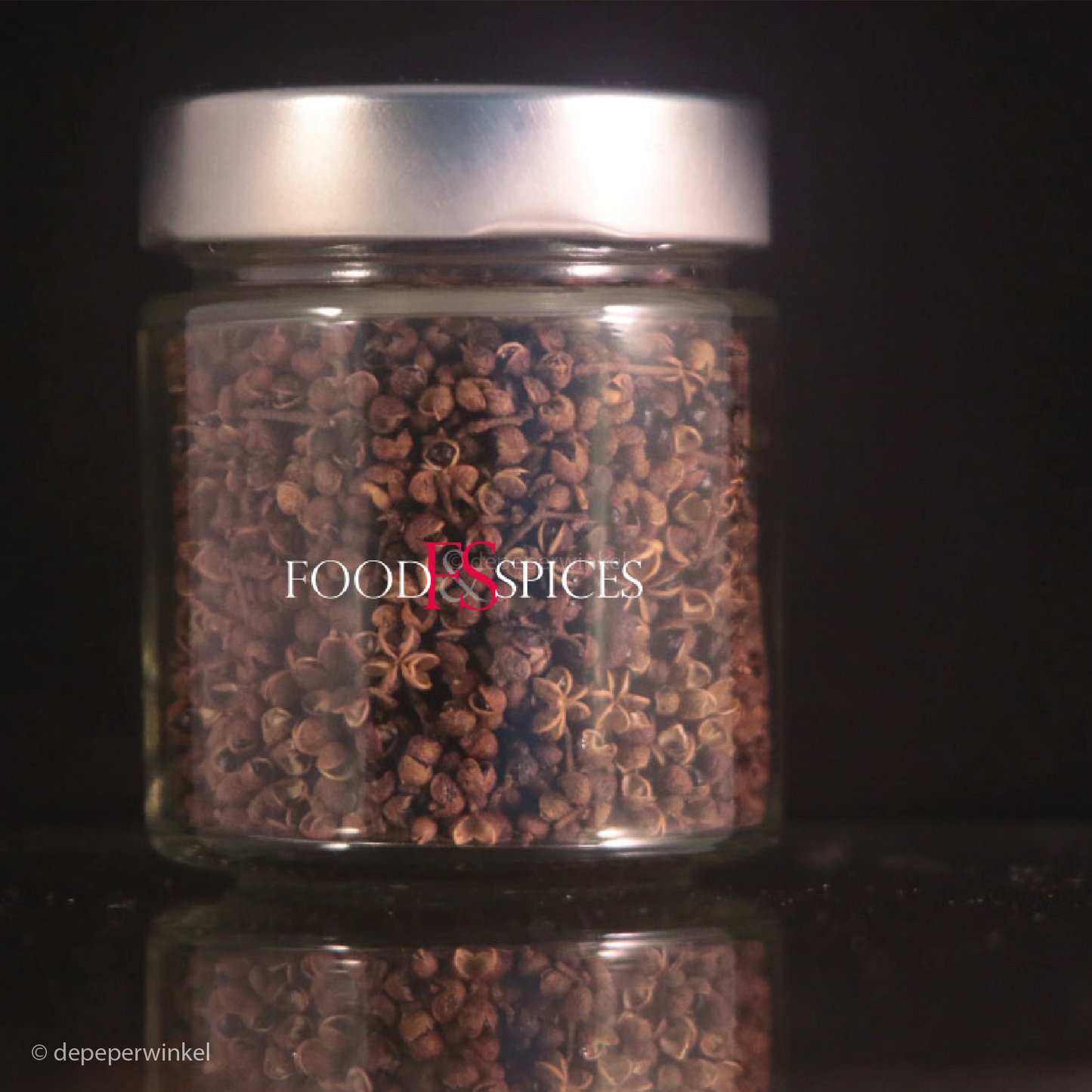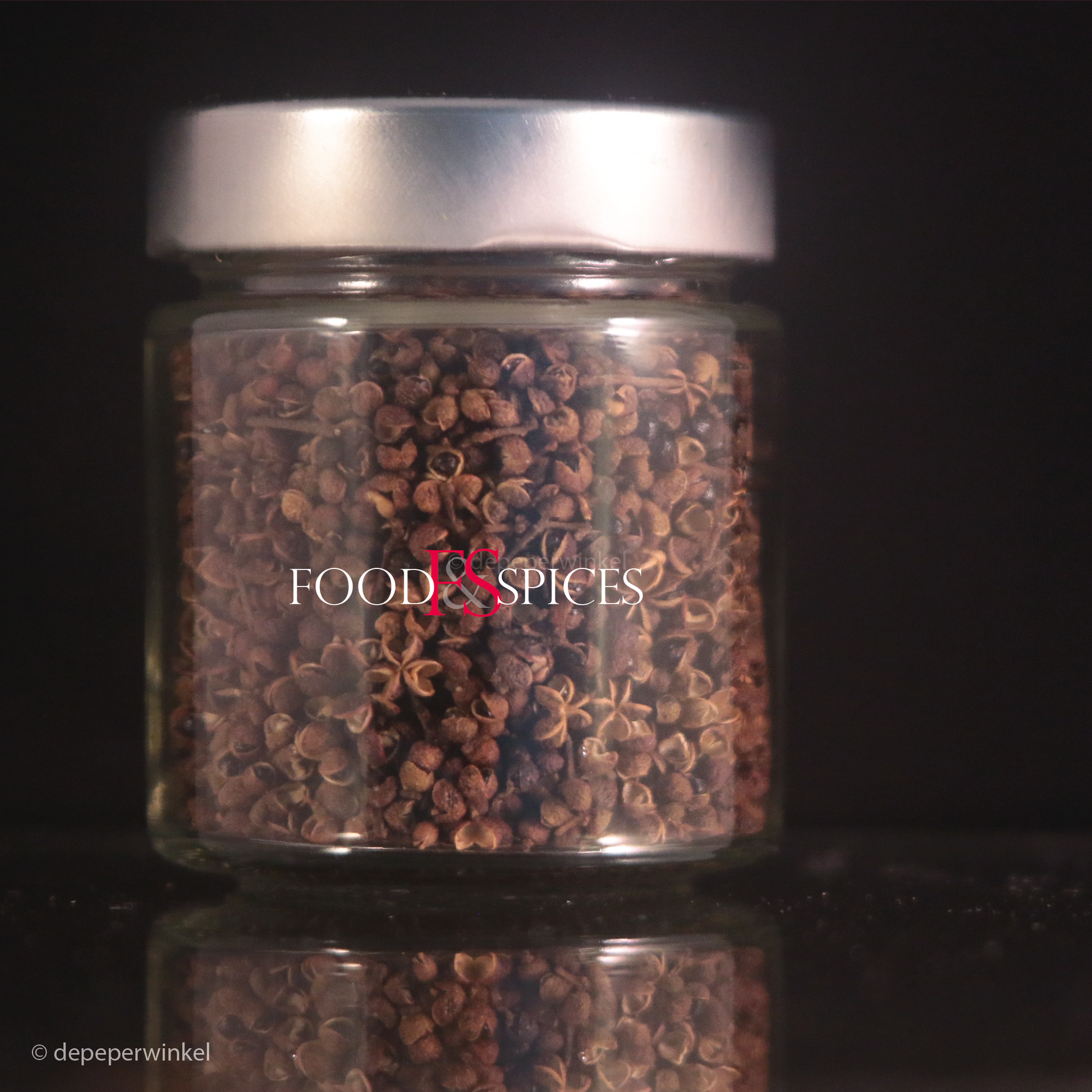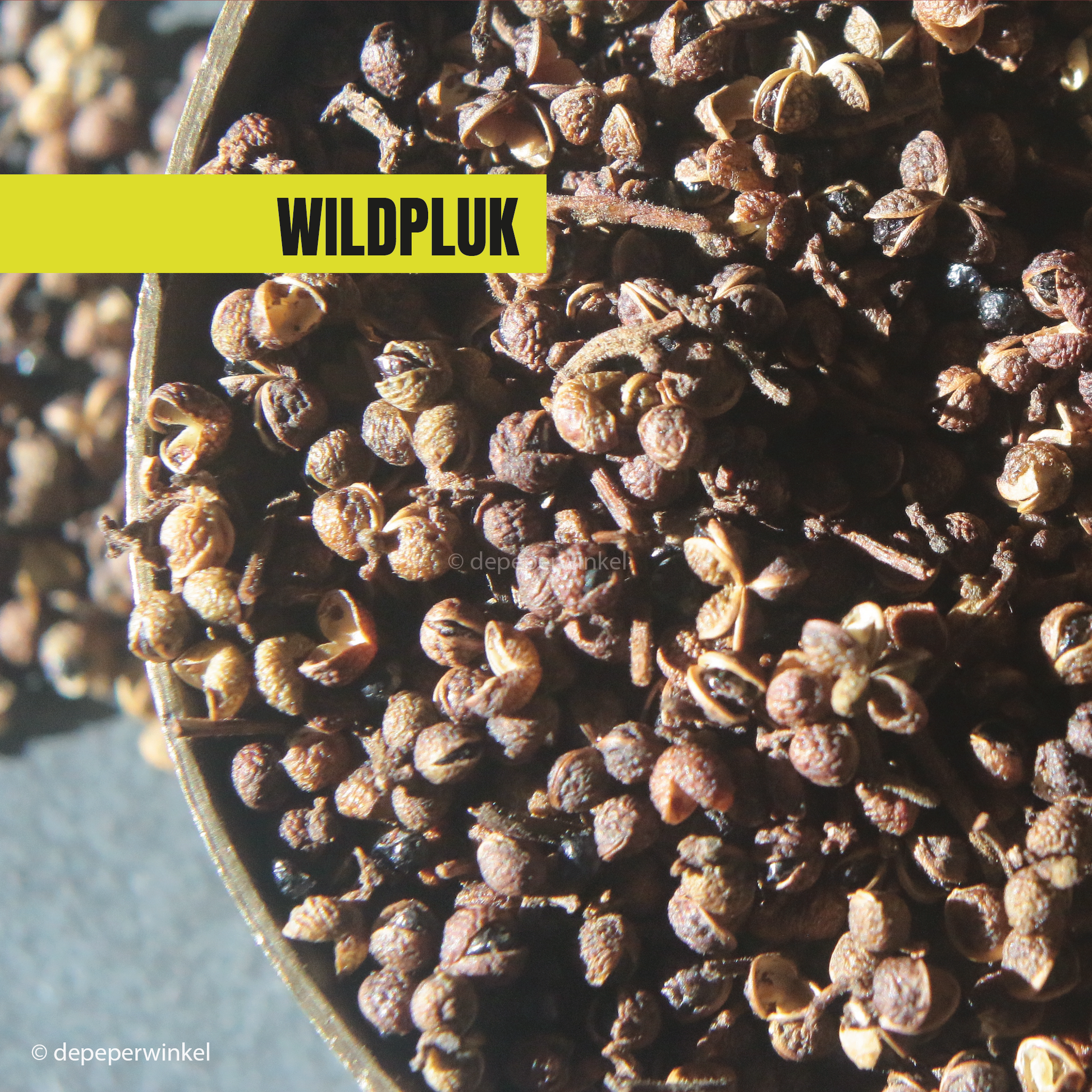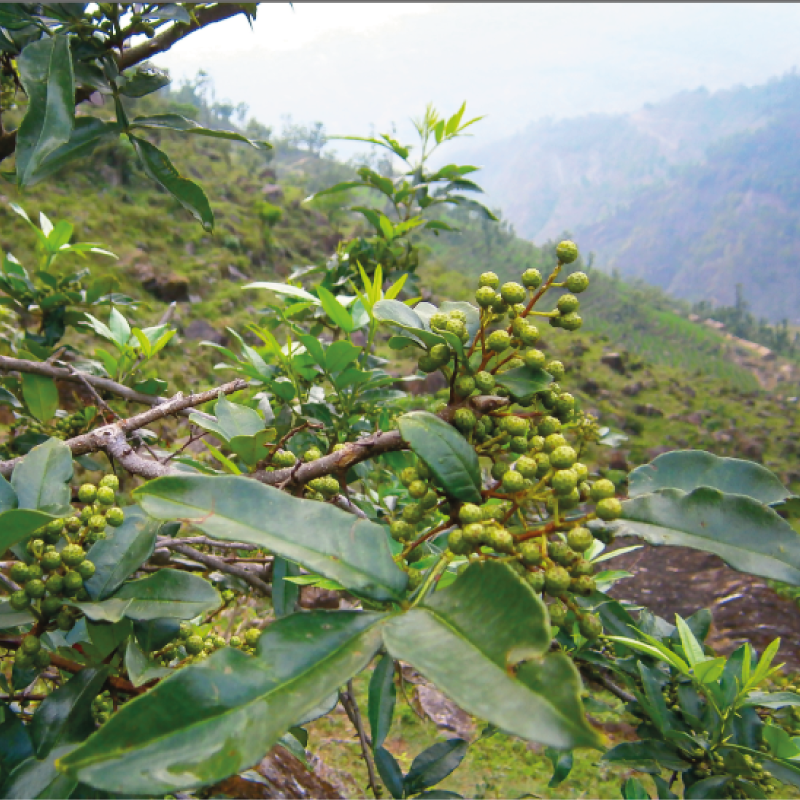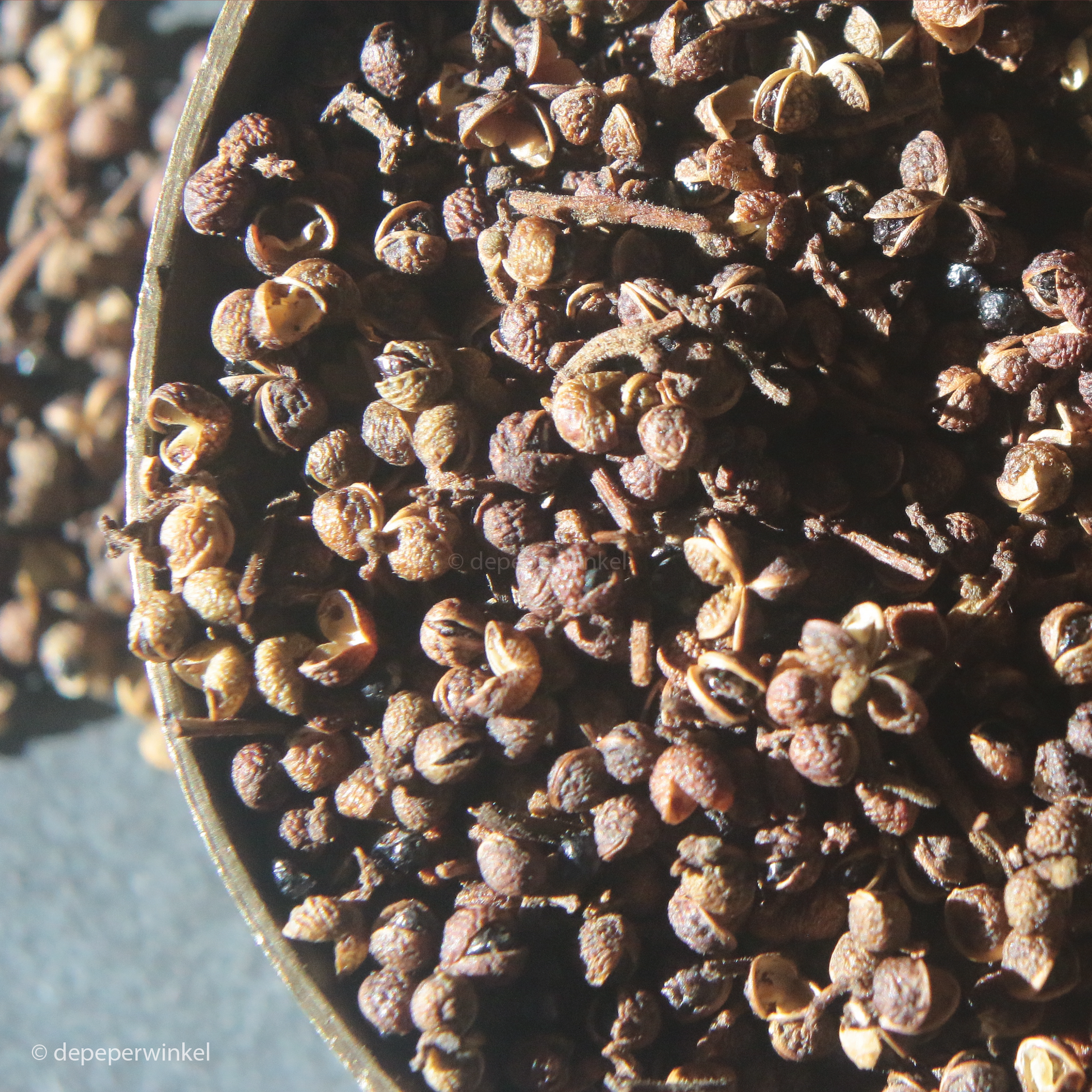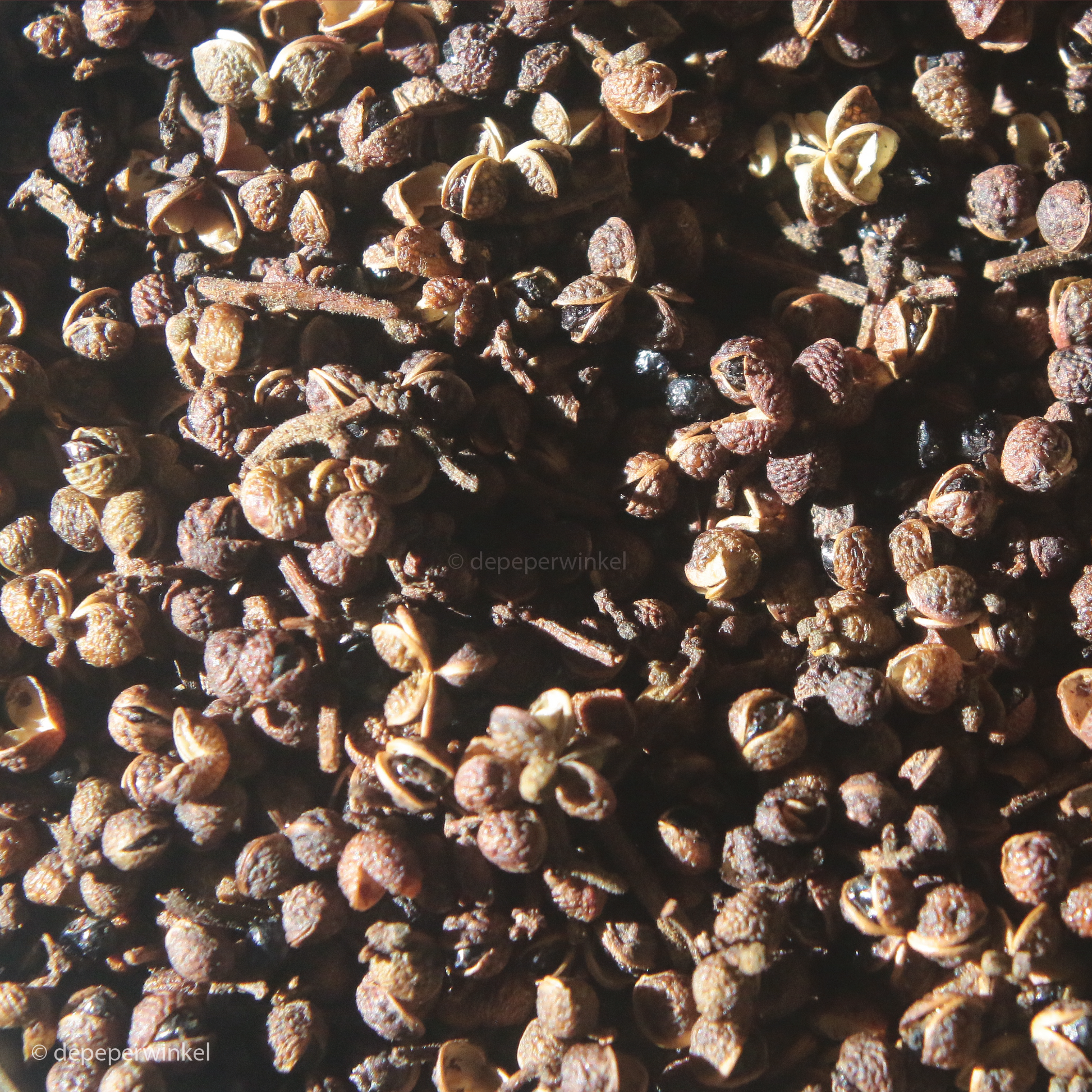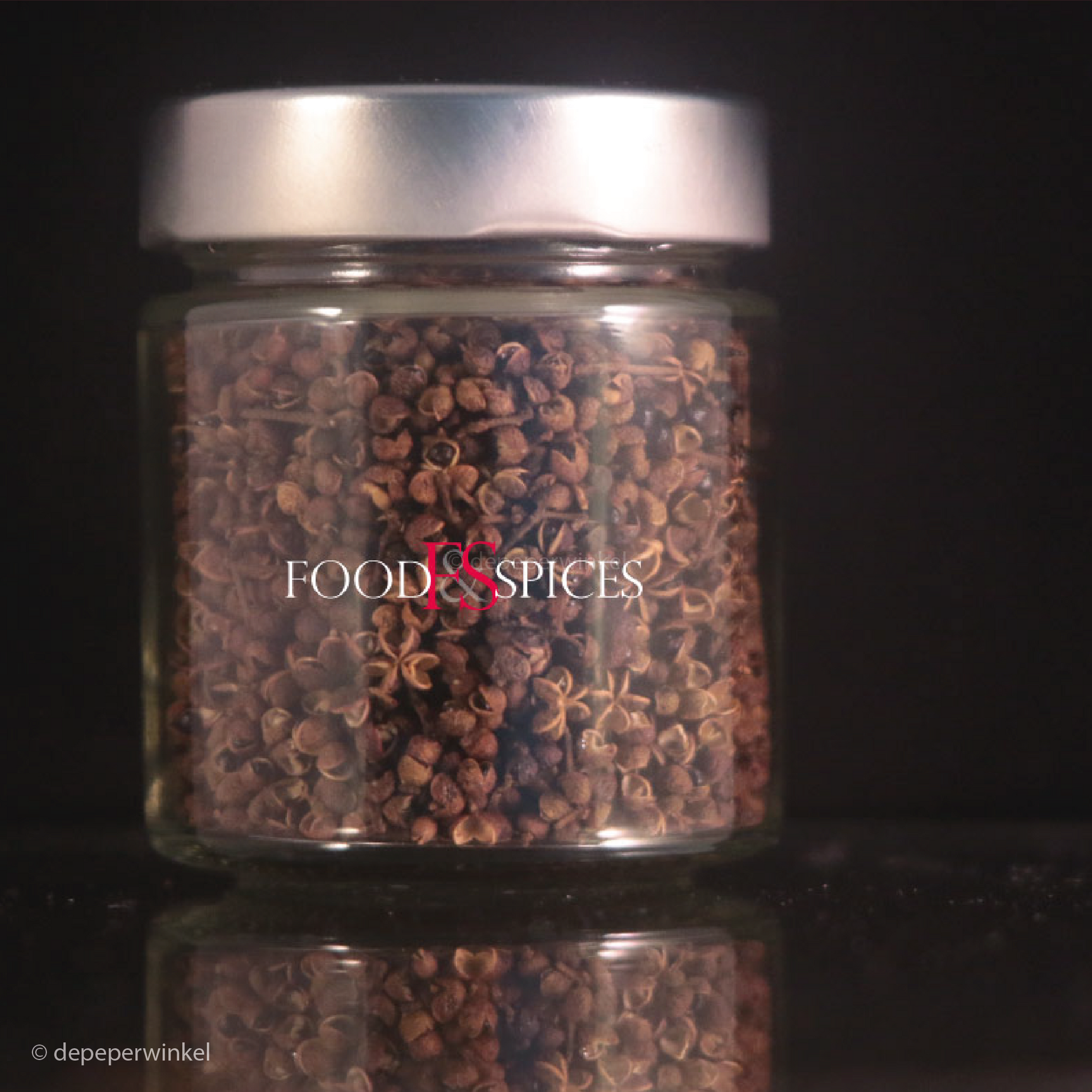depeperwinkel
Ma khaen - Laotian mountain pepper
Ma khaen - Laotian mountain pepper
Unable to load availability for pickup
This mountain pepper, called ma khaen in Laos, grows wild in the mountainous Luang Prabang, in northern Laos.
The pepper is mainly collected by women and is an important source of income. In the Luang Prabang region, ma khaen is the fifth most important non-woody forest product, according to FAO data. For a long time, the entire bushes were cut down to harvest the berries, but nowadays the harvest takes place sustainably, without deforestation.
This mountain pepper is the berry of an exclusively wild Sichuan pepper, or actually peppers. The berry comes from the Zanthoxylum rhetsa or Zanthoxylum limonella. It is famous for its flavor palette, not so much for its pungency, as you would expect from a Sichuan pepper.
It has a gently pungent pungency and the unmistakable citrus flavor (mandarin) that becomes stronger and sweeter when the pepper is heated. The tree on which this pepper grows is the Indian mountain pepper or Indian triphal, which grows naturally in an area called the Indamalaya, the ecozone that extends from India to the Indonesian island of Sulawesi, including in Vietnam. The tree grows up to an altitude of 1,500 meters in moist, dense forests.
The berry is quite small, just like the berry of the andaliman, and, like the andaliman, is harvested by hand. No easy task, because the branches of the Zanthoxylum have vicious spines. The berries grow in smaller clusters that manifest themselves when dried as 'mini star anise'. Each berry contains one seed.
The unique sharpness experience of sanshol
Characteristic of all Zanthoxylum peppers, and therefore also of the Sichuan pepper, is the tingling you experience on the tip of your tongue due to a substance in the pepper called sanshool, named after the Japanese sanshō. The pungency is caused by the amides in the peel of the fruit: α-, β-, γ- and δ-sanshool, α hidroxy sanshool and β-hidroxy sanshool. γ sanshool and α hidroxy sanshool are mainly responsible for the anesthetic effect. The amount of α-hidroxy-sanshool in the berries can amount to (more than) 50 ‰ of the dry weight, of γ sanshool around 5 ‰.
The tingling is accompanied by a slight numbness, jokingly compared to tasting a 9 volt battery. One single berry is enough to experience that! This somato sensation, stimulation by touch, has been used as an anesthetic in traditional medicine in Asia for centuries. The effect is very complex and the subject of extensive studies. Hydroxy-α-sanshol in particular is said to cause the tingling, and there are certain parallels with the pungency sensation of capsaicin, the pungent substance in chili peppers, but also with menthol and mustard oil.
Smell and taste
The berries have a complex aroma, in which you taste tangerine peel and tea, but also anise and menthol, and the sweet notes of angelica. The smell is similar to that of black pepper due to the high sabinene content, which is higher in the dried berry than in the fresh. This is the flavor palette:
- D-limonene (dipentene), sweet citrus flavor, occurring modestly in nutmeg, mace and cardamom,
- β-phellandrene, pleasant mint and citrus flavor, also found in allspice,
- β-pinene, woody pine odor, as in cumin, pine, juniper and hemp,
- sabinene, responsible for the woody, camphoraceous flavor of black pepper, among others
- carvotan acetone, also minty, as in angelica.
- dihydrocarvol as in black pepper and black tea, and
- the bitter terpinol, - mainly found in the seeds - as in cranberries.
This pepper is therefore delicious in combination with the aforementioned spices, and in general with products that go well with citrus, such as crustaceans and shells, white fish, salmon, white butter sauces, veal, pork and duck. Can be eaten raw or added at the last minute, and is delicious in vegetable salads and desserts or with fruit.
In India it is preferred to use the pepper called triphal (Marathi) or triphala (Gujarati) 'pure', that is to say not in combination with other spices. Triphal is mainly used in fish dishes, just like in Vietnam, where the mountain pepper is eaten with grilled fish, with grilled or dried meat and with smoked buffalo meat. Sometimes people rub meat with ground mountain pepper to make the meat more durable.
Usage
Roast the whole fruits. Crush the fruits to release the seeds. It is best to mortar these and grind the seed pods. Just like the whole berries (with seeds), provided they are roasted until crispy in advance.
Features:
- 100% berries of the Zanthoxylum rhetsa
- origin: Luang Prabang, Laos
Assortment
- available in glass, stand-up pouch and test tube
- glass jar contains 30 grams
- stand-up pouches with a capacity of up to 30 to 300 grams
- available in 10 ml test tube
- larger quantities on request
Gift packaging
- the jar is available in a tasteful gift packaging, consisting of a cube box filled with black tissue paper
- for an overview of our gift packaging, please refer to the gift packaging section
General advice
- ma khaen is a versatile Sichuan pepper, used both raw and roasted.
Save:
- store your kampot pepper in closed packaging
- preferably store in a dark, dry and cool place
- best before July 2026 (07/26)
- this expiration date is an indication
Want to know how ma khaen tastes ?
You can also try a test tube. The tube contains enough pepper to understand the flavor essence.
Share
